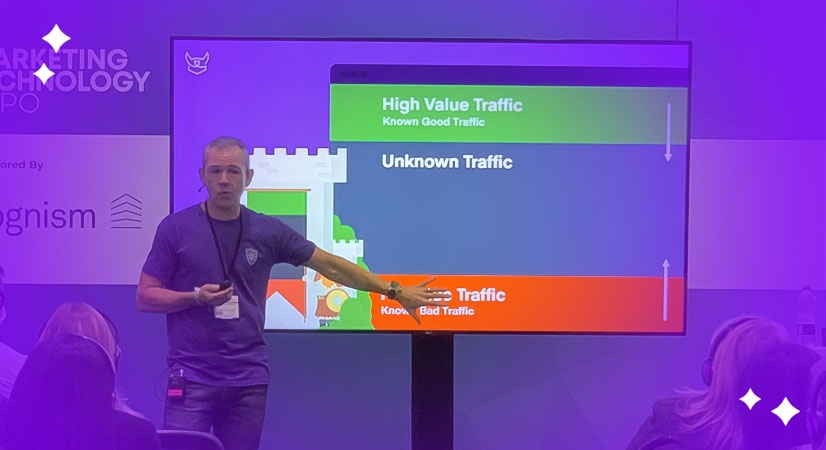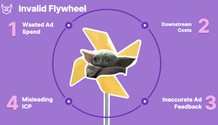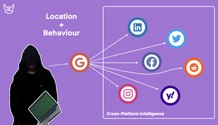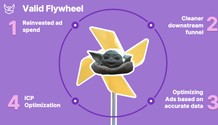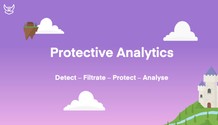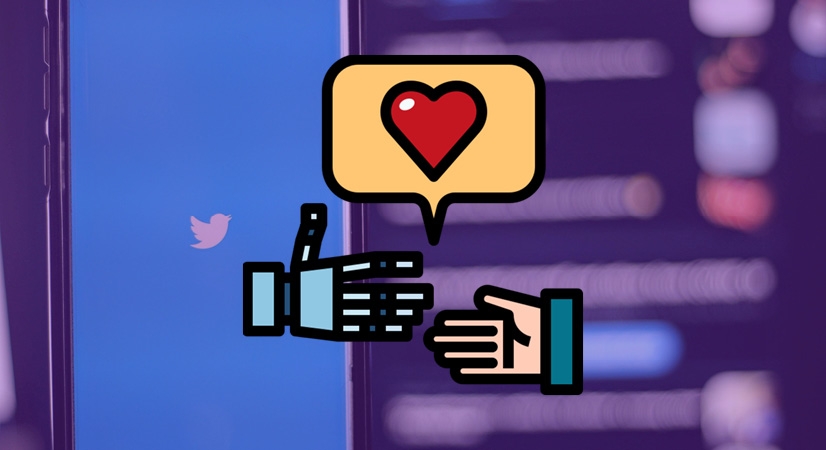At London’s B2B Expo last week, our CMO Pete Rawlinson talked about what constitutes the typical traffic stream to online ads.
Here’s what he said about where it comes from, its nature, and how we can gain insights from converting and non-converting ad clicks.
Wasted Opportunities
Ad traffic can be split into three categories: the ‘known-good’ (high-converting traffic that everyone wants to see), ‘known-bad’ (non-human, fraudulent, and generally invalid traffic), and the ‘unknown’ (the largest cohort of traffic.)
Most marketers and Martech solutions focus on increasing and optimizing high-converting traffic. It’s become almost a given that a proportion of unknown or invalid traffic is thrown away as a cost of getting converting clicks.
But, while marketers can feel good about getting a reasonable ROAS from converting traffic, there’s a dark cost that is often ignored. By discarding such huge portions of traffic, you’re also throwing away opportunities.
The Cost Of Invalid Traffic
Let’s look at what happens to your ad optimization processes when you unintentionally accept invalid clicks into your funnel.
Bad traffic, consisting of fraudulent and invalid clicks, is difficult to detect due to the way they emulate human behavior so well. The problem is, they’re never going to convert.
The downstream impact of accepting these bad clicks becomes exponentially more expensive, especially when human interaction is introduced.
By taking compromised data and using it to inform your ad optimizations, you’re essentially optimizing for more bad traffic. You’re feeding the wrong characteristics into your automated strategies and attracting more of the same – invalid clicks.
Not only does this erode the effectiveness of your online campaigns, it forms a misleading ICP that has repercussions far beyond inbound marketing campaigns. Bad traffic disrupts your entire business operations, from affecting sales strategies and customer personas to damaging client services.
Why Ad Networks Aren’t Doing Enough
Ad networks provide some level of fraudulent click analysis and will even refund you whatever they can find. The issue is they aren’t actively looking.
It’s not in the best interests of ad networks to draw attention to the illegitimate traffic on their sites and proactively offering refunds cuts into their bottom line.
So, while you may get a partial refund after submitting all the relevant paperwork, it won’t stop bad traffic sources from targeting you again or on other platforms. It also doesn’t stop non-converting traffic from infiltrating your funnel, with all those downstream impacts discussed above.
We typically see 20+% of ad budgets being wasted in addition to what the ad networks refund.
It’s fallen to advertisers to take responsibility for the traffic hitting their ads and to defend themselves from invalid activity.
How We Identify & Protect On All Platforms
So, how do advertisers take control?
Firstly, you need to convert the ‘unknown’ to ‘known good’ and ‘known bad’. By continuously filtering your traffic through a system designed to identify click signals as good or bad.
By comparing your click data to the analysis of billions of other clicks, we can determine what is valid, suspicious, or invalid. This continuous cycle of improvement brings you closer and closer to 100% genuine traffic, and can inform new and existing campaigns on all platforms.
Typically, unwanted traffic can be identified in two ways.
Firstly, the IP addresses of known bad actors such as bot farms and even competitor Head Office locations.
Secondly, usingautomation and behavioral analysis, such as mouse movements, to determine non-human action or recognize common characteristics of human fraud farms.
As a result, it’s possible to analyze and detect unwanted behavior on one ad network and apply it to all the others in use. This enables a powerful cross-network leverage that significantly increases not only the level of ad protection but the behavioral insights into traffic hitting ads across each network.
The Impact Of Cleaning Your Traffic
So, what happens when you separate the good from the bad? Well, it’s the inverse of the invalid traffic cycle we saw earlier.
You make the best use of your ad spend, with savings realized by a much smaller volume of invalid clicks being re-invested into better-performing campaigns.
You reduce all downstream costs of infiltrated clicks.
You feedback much more accurate click data to your ads, based on characteristics and profiles you want to attract.
You get closer and closer to your ICP with all the commercial benefits that it can provide.
What Can You Do With All This Data?
By separating the good from the bad from the unknown, you gain access to a reservoir of data with the potential to provide insights beyond just inbound acquisition and ad protection.
This reservoir is the data that ad networks currently keep hidden from you and provides massive potential to enable increased user and revenue acquisition.
‘Protective Analytics’ is the name we’ve given to how businesses can use the data typically discarded as a cost of online advertising to their competitive advantage.
A key thing to note is the word ‘businesses.’ This isn’t just for marketing departments; from sales insights, cross-functional persona optimization, churn reduction, increases in NPS, the opportunities to improve many aspects of the business could be hidden within this until-now opaque traffic data.
A Few Examples Of The Future
Let’s end with a few examples of what you could do with this data.
- Acquisition teams can use it to drive efficiencies in both manual strategy and automated bidding and targeting mechanisms.
- Client success and support teams can use this to proactively filter bot activity, messages, and outreach from their live chat and support ticketing platforms.
- Sales and RevOps teams can use this data to clean their lead flow, make sure reps spend only genuine user interaction, and aren’t wasting time following up on spam form fills or fake leads.
- Security teams can leverage this to reduce the impact of payments fraud by proactively disabling payment functionalities for fraudulent users or requiring additional security measures such as 3D Secure.
Protective Analytics may seem futuristic, but that’s because marketers have become used to only working with the data ad networks provide.
It’s time to open up the possibilities of your ad data, alongside protecting it from invalid traffic, and mine gold from what you’ve previously been discarding as useless.
Audit Your Ad Traffic Now
Unlock your hidden ad data and see exactly what clicks you’re paying for on all platforms with a free Traffic Audit.
